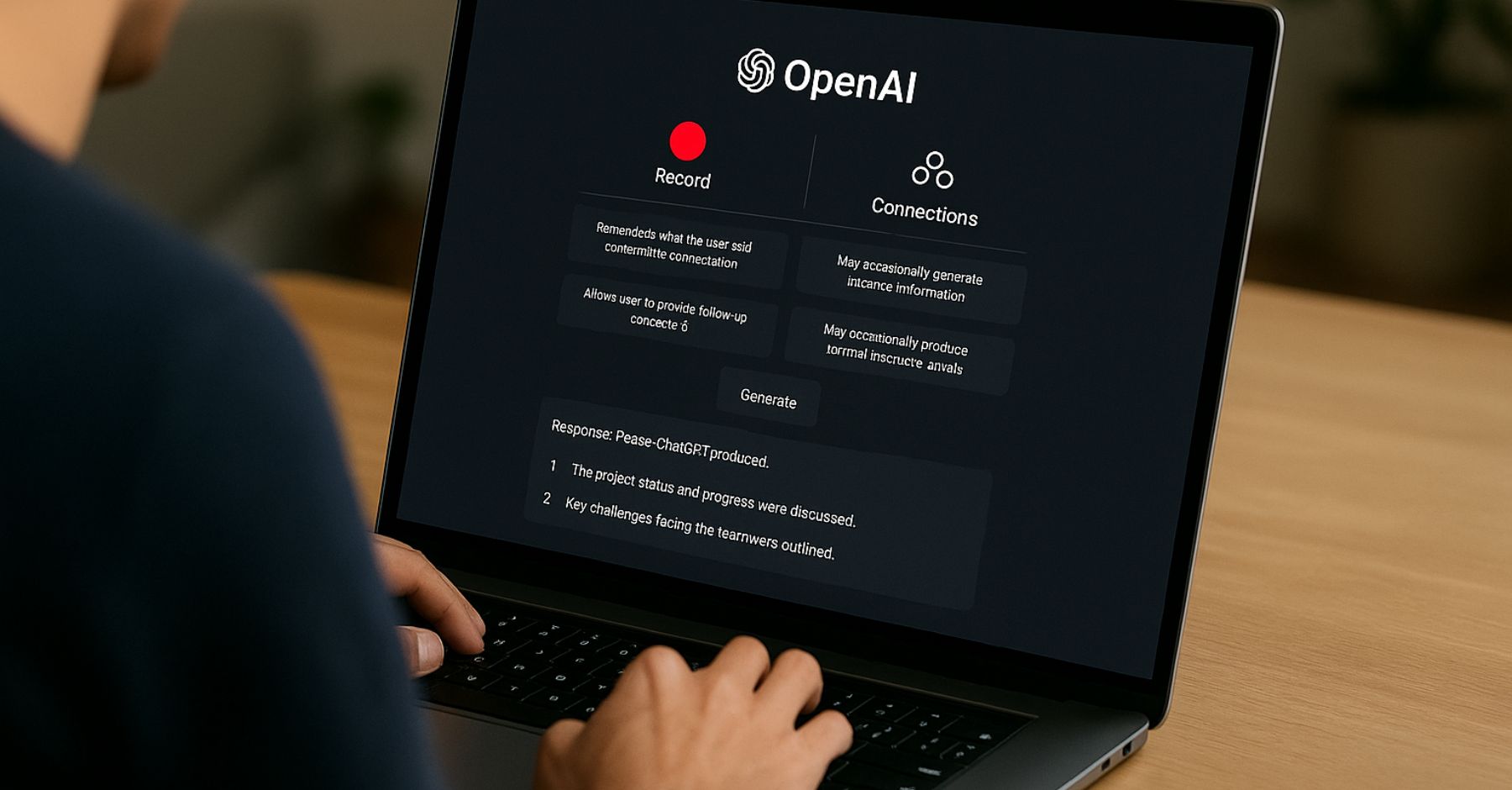Each week we’ll gather headlines and tips to keep you current with how generative AI affects PR and the world at large. If you have ideas on how to improve the newsletter, let us know!
What You Should Know
Exploring OpenAI’s Recent Capabilities
OpenAI continues to turn ChatGPT into the “everything” app with new capabilities and features. Last week, the company introduced “record mode” and “connectors” to integrate AI even deeper into workflows.
Record mode is only available for Team workspaces so far, and only on the macOS desktop app. It appears in the lower-right corner of the dialog box where you’d type in your prompt. Once you click the record icon, a pop-up appears with a timer to show how long the conversation is going and a “stop” button to end the conversation (you can record up to 120 minutes per conversation).
When you hit stop, you can either click “resume” to keep recording or “send” to ship the audio to ChatGPT. Once it has processed the audio, ChatGPT produces a report in a canvas with a summary, key points, action items, and open questions. You can type in questions about the conversation, and ChatGPT will produce answers with citations. You can also ask for a transcript, but it doesn’t automatically provide one. Unlike transcription services that appear as meeting participants, like Otter, record mode only appears on your screen, so you should notify others if you’re recording them.
Connectors enable ChatGPT to interact with your email inbox, calendar, and accounts on platforms like Box, Dropbox, GitHub, Google Drive, Hubspot, Linear, and SharePoint. When connected, ChatGPT makes those third-party apps available for deep research, like if you wanted to run a deep analysis across multiple sources in a complex project. For Team, Enterprise, and Edu accounts, it can also search Box, Dropbox, Google Drive, Microsoft OneDrive, and SharePoint to find files.
Your data and documents can make AI more personalized and useful — if your organization’s risk tolerance allows it. This is when having an AI policy is crucial, and if you don’t have one, be sure to consult your leadership team and find your organization’s balance between data security and the possible use cases.
With the right settings, OpenAI won’t train new models on your data, and the ability to find insights and trends across platforms and conversations might make it worth taking advantage of these new features.
Elsewhere …
- At WWDC 2025, Apple Introduces an AI-Powered Shortcuts App
- OpenAI Hits $10 Billion in Annual Recurring Revenue Fueled by ChatGPT Growth
- Anthropic’s AI-Generated Blog Dies an Early Death
- Amazon Announces $20 Billion Investment in Rural Pennsylvania for AI Data Centers
- News Sites Are Getting Crushed by Google’s New AI Tools
 Connecting with guardrails
Connecting with guardrails
What’s happening: If the new ChatGPT “connectors” capability (see above) gives you pause, there’s a way to give the AI tool more granular access.
Try this: It’s actually not a new feature at all. If you click on the “plus” symbol when you start a new chat and click on “Add from apps,” you can choose from Microsoft OneDrive or Google Drive. You select the individual files ChatGPT can see, so it’s not unfettered access to everything you’ve created.
How to use it: I use this capability most often to show examples of the content I’m trying to create and to ask for feedback. If I’m starting a new blog post, for instance, I can share other posts so ChatGPT can mimic the tone, style, and format. I usually take the AI outputs and put them into a Google Doc, where I heavily edit them. Once I think I’m done, I’ll share the file with ChatGPT and ask for feedback to see if it aligns with the goals I laid out and prompt it for constructive criticism to see if there are any ideas worth implementing.
Quote of the Week
“In our view, monetization potential for AI is still on the table from both the services and hardware side, but we acknowledge that investors will need to be patient over the next six to nine months as the lack of AI innovation and other concerns linger.”
— Angelo Zino, Senior Vice President and Equity Analyst at CFRA Research, to Axios on Apple’s underwhelming AI updates at WWDC
How Was This Newsletter?



